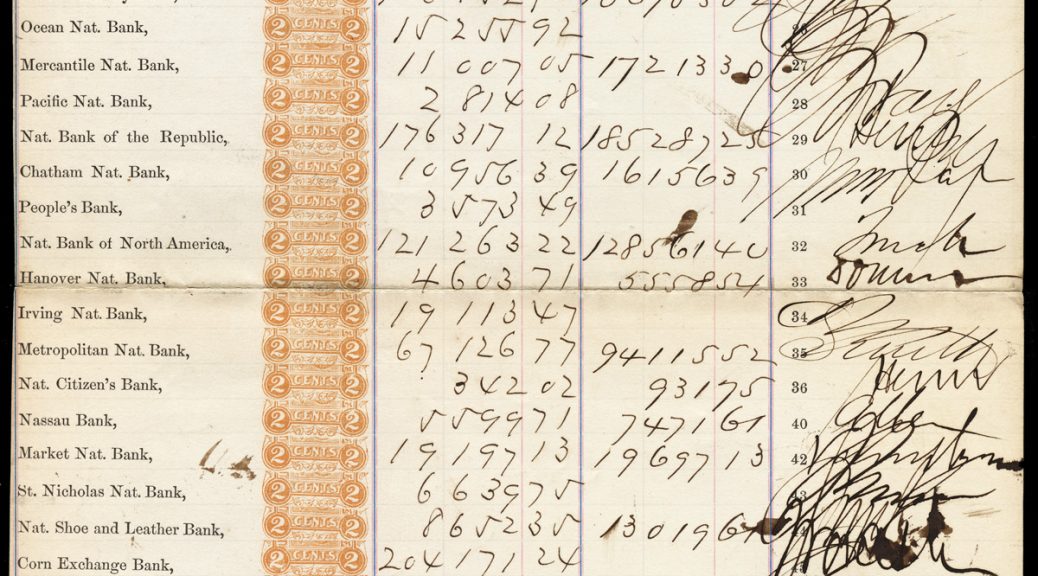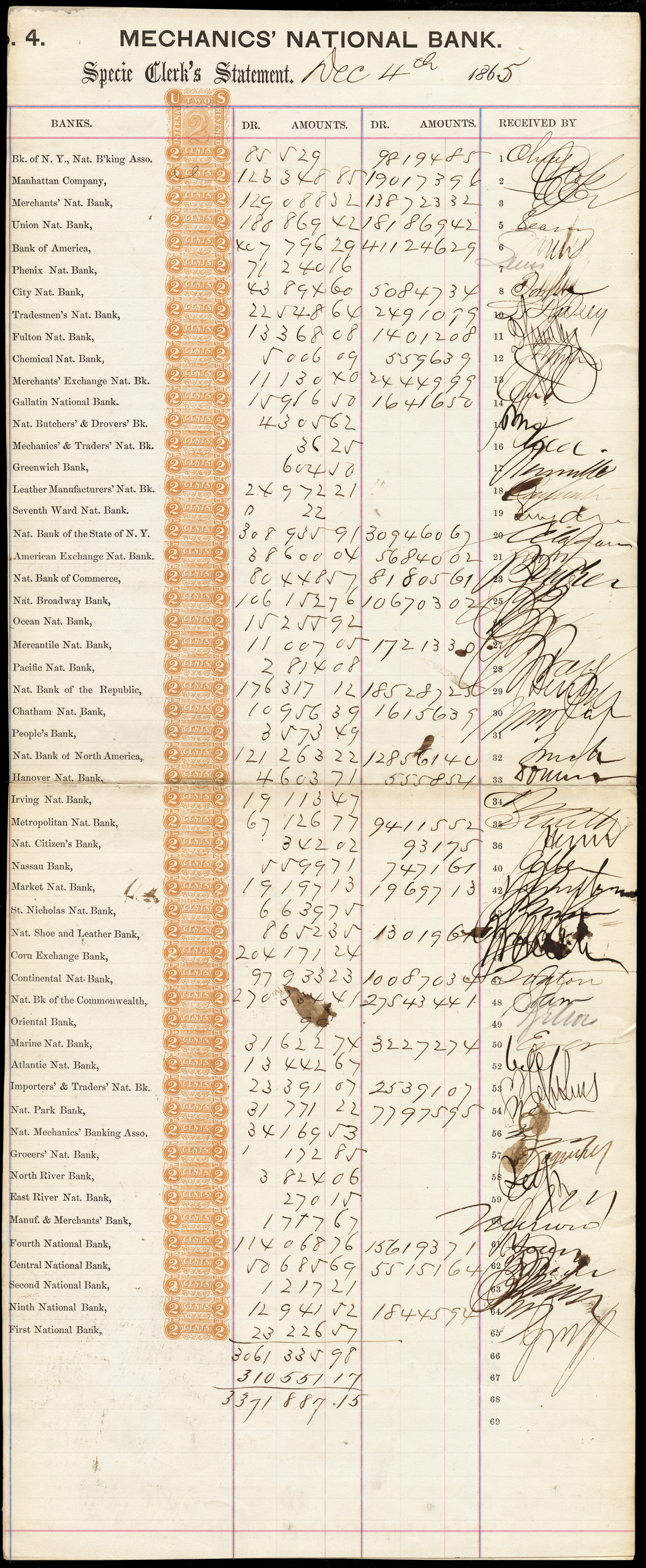
Ruh Roh… I Got a Tapeworm.
But the good kind, not the parasite… unless you want to consider what it did to my wallet 😉
I already had an example of RN-A11, but only the leftmost column (bank names and the revenue imprint) rather than the full document. Both are valued in Scott, with the full document being over 4x the value of just the left column ($1,100 vs. $250).
This example showed up on eBay, I made an offer, and it was accepted.
It’s called a tapeworm for the long wormlike string of revenue imprints at left.
I wouldn’t go so far as to call it rare or even necessarily scarce, but it certainly isn’t common. I’ve been looking for one that wasn’t priced at full Scott or above for some time. There aren’t many completed auction examples, and both Eric and Richard rarely have more than one example in inventory (at least that are made public at any rate).
This one is in lovely condition.
I don’t understand why this one is RN-A11 when it preceded RN-A10 (my understanding is that the 3 additional banks on RN-A10 were added to the bottom of RN-A11).
Why are they ordered the way they are in Scott? Or is my understanding of their creation sequence inaccurate?
From Ron Lesher:
There was a time that four lengths of tapeworms were listed. But in 1990 I wrote an article in the American Philatelic Congress yearbook that debunked all but the two known lengths. You have the short one – its use is documented in October – December 1865. These were used daily by specie clerks from each bank in the New York Clearing House as they exchanged checks cashed on other banks. In the afternoon there was one exchange of money to settle accounts. This saved each specie clerk from settling separately with each bank (as they had done earlier in the nineteenth century). This was done six days a week; yes, Saturday was a business day! As more banks became members of the Clearing House, longer tape worms were created. The long one is recorded for the first half of 1867. Each two cent stamp is paying the receipt tax. The longer ones show charring along the left side, evidence that they were rescued from burning.
A question from a forum member:
What was the point of having part imprints of 2c stamps, how come they didn’t have a single imprint with the total required value?
Ron’s reply:
First, In 1865 there was no stamp or imprint with a value of $1.08. Thus it was more practical to pay the receipt tax of 2 for each line with an imprint. But since there was not enough space on each line, the particle designs as if there was a stamp per line. This was carried out on other instruments, notably bonds where multiple taxes were being paid. Thus we might have a bond with a $1.00 imprint plus several 4¢ imprints for imbedded agreements and certifications. This made it easy to account that the total tax liability was being paid. And, of course, eliminated the need for many different denominations. The same was true for adhesive stamps where we frequently see several stamps on a document.
